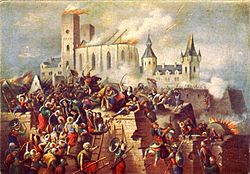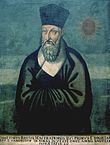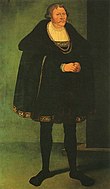| Millennium: | 2nd millennium |
|---|---|
| Centuries: | |
| Decades: | |
| Years: | |

| 1552 by topic |
|---|
| Arts and science |
| Leaders |
| Birth and death categories |
| Births – Deaths |
| Establishments and disestablishments categories |
| Establishments – Disestablishments |
| Works category |
| Gregorian calendar | 1552 MDLII |
| Ab urbe condita | 2305 |
| Armenian calendar | 1001 ԹՎ ՌԱ |
| Assyrian calendar | 6302 |
| Balinese saka calendar | 1473–1474 |
| Bengali calendar | 958–959 |
| Berber calendar | 2502 |
| English Regnal year | 5 Edw. 6 – 6 Edw. 6 |
| Buddhist calendar | 2096 |
| Burmese calendar | 914 |
| Byzantine calendar | 7060–7061 |
| Chinese calendar | 辛亥年 (Metal Pig) 4249 or 4042 — to — 壬子年 (Water Rat) 4250 or 4043 |
| Coptic calendar | 1268–1269 |
| Discordian calendar | 2718 |
| Ethiopian calendar | 1544–1545 |
| Hebrew calendar | 5312–5313 |
| Hindu calendars | |
| - Vikram Samvat | 1608–1609 |
| - Shaka Samvat | 1473–1474 |
| - Kali Yuga | 4652–4653 |
| Holocene calendar | 11552 |
| Igbo calendar | 552–553 |
| Iranian calendar | 930–931 |
| Islamic calendar | 958–960 |
| Japanese calendar | Tenbun 21 (天文21年) |
| Javanese calendar | 1470–1471 |
| Julian calendar | 1552 MDLII |
| Korean calendar | 3885 |
| Minguo calendar | 360 before ROC 民前360年 |
| Nanakshahi calendar | 84 |
| Thai solar calendar | 2094–2095 |
| Tibetan calendar | 阴金猪年 (female Iron-Pig) 1678 or 1297 or 525 — to — 阳水鼠年 (male Water-Rat) 1679 or 1298 or 526 |
Year 1552 ( MDLII ) was a leap year starting on Friday of the Julian calendar.








